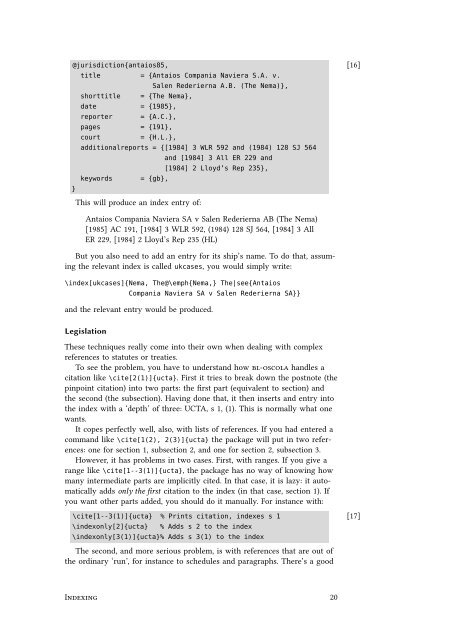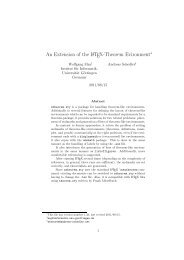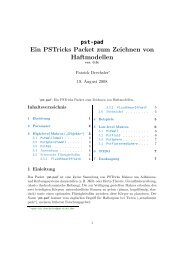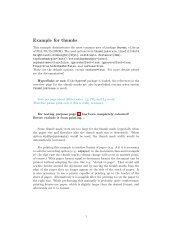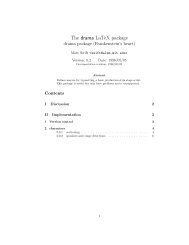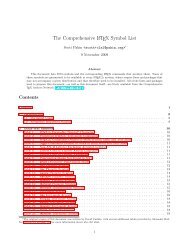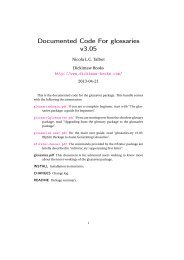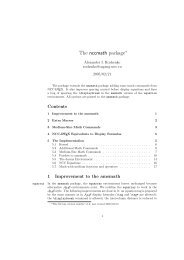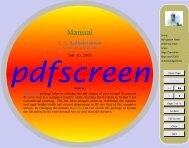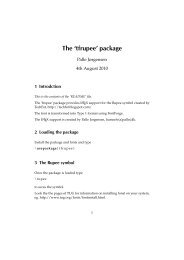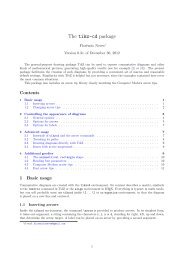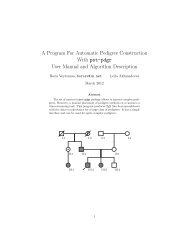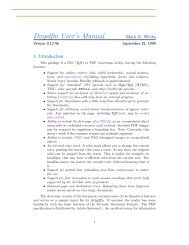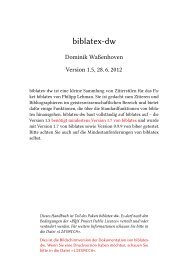oscola.pdf. - Mirrors.med.harvard.edu
oscola.pdf. - Mirrors.med.harvard.edu
oscola.pdf. - Mirrors.med.harvard.edu
You also want an ePaper? Increase the reach of your titles
YUMPU automatically turns print PDFs into web optimized ePapers that Google loves.
@jurisdiction{antaios85,<br />
}<br />
title = {Antaios Compania Naviera S.A. v.<br />
shorttitle = {The Nema},<br />
date = {1985},<br />
reporter = {A.C.},<br />
pages = {191},<br />
court = {H.L.},<br />
Salen Rederierna A.B. (The Nema)},<br />
additionalreports = {[1984] 3 WLR 592 and (1984) 128 SJ 564<br />
keywords = {gb},<br />
This will produce an index entry of:<br />
and [1984] 3 All ER 229 and<br />
[1984] 2 Lloyd’s Rep 235},<br />
Antaios Compania Naviera SA v Salen Rederierna AB (The Nema)<br />
[1985] AC 191, [1984] 3 WLR 592, (1984) 128 SJ 564, [1984] 3 All<br />
ER 229, [1984] 2 Lloyd’s Rep 235 (HL)<br />
But you also need to add an entry for its ship’s name. To do that, assuming<br />
the relevant index is called ukcases, you would simply write:<br />
\index[ukcases]{Nema, The@\emph{Nema,} The|see{Antaios<br />
Compania Naviera SA v Salen Rederierna SA}}<br />
and the relevant entry would be produced.<br />
Legislation<br />
These techniques really come into their own when dealing with complex<br />
references to statutes or treaties.<br />
To see the problem, you have to understand how bl-<strong>oscola</strong> handles a<br />
citation like \cite[2(1)]{ucta}. First it tries to break down the postnote (the<br />
pinpoint citation) into two parts: the first part (equivalent to section) and<br />
the second (the subsection). Having done that, it then inserts and entry into<br />
the index with a ‘depth’ of three: UCTA, s 1, (1). This is normally what one<br />
wants.<br />
It copes perfectly well, also, with lists of references. If you had entered a<br />
command like \cite[1(2), 2(3)]{ucta} the package will put in two references:<br />
one for section 1, subsection 2, and one for section 2, subsection 3.<br />
However, it has problems in two cases. First, with ranges. If you give a<br />
range like \cite[1--3(1)]{ucta}, the package has no way of knowing how<br />
many inter<strong>med</strong>iate parts are implicitly cited. In that case, it is lazy: it automatically<br />
adds only the first citation to the index (in that case, section 1). If<br />
you want other parts added, you should do it manually. For instance with:<br />
\cite[1--3(1)]{ucta} % Prints citation, indexes s 1<br />
\indexonly[2]{ucta} % Adds s 2 to the index<br />
\indexonly[3(1)]{ucta}% Adds s 3(1) to the index<br />
The second, and more serious problem, is with references that are out of<br />
the ordinary ‘run’, for instance to sch<strong>edu</strong>les and paragraphs. There’s a good<br />
Indexing 20<br />
[16]<br />
[17]


